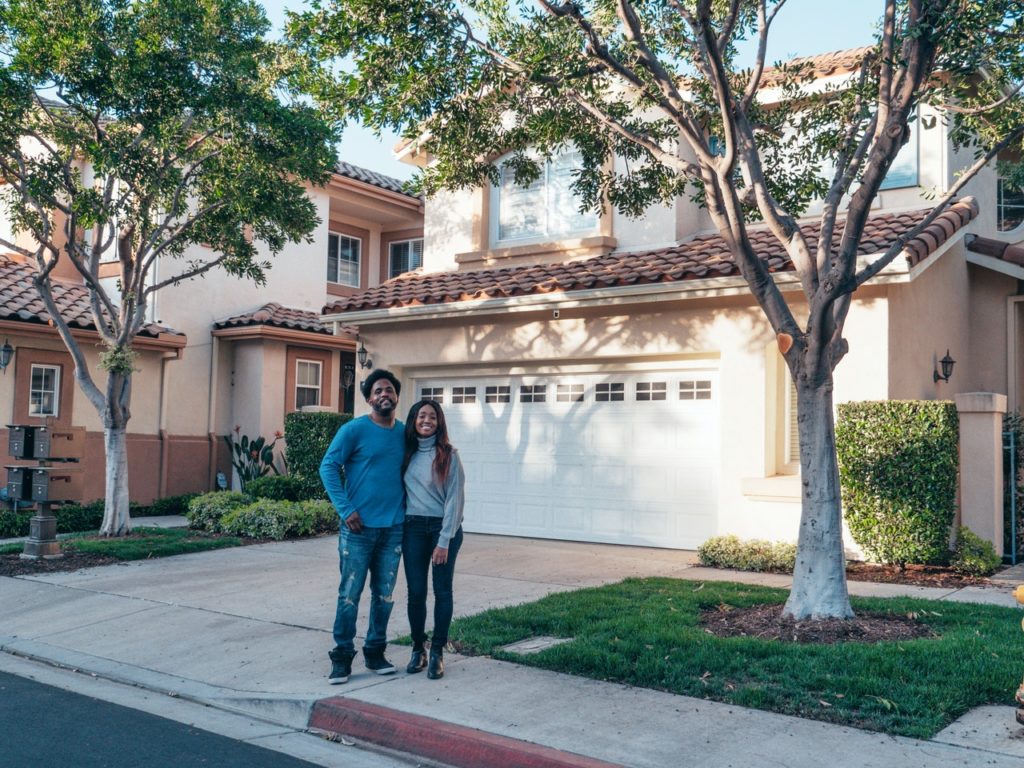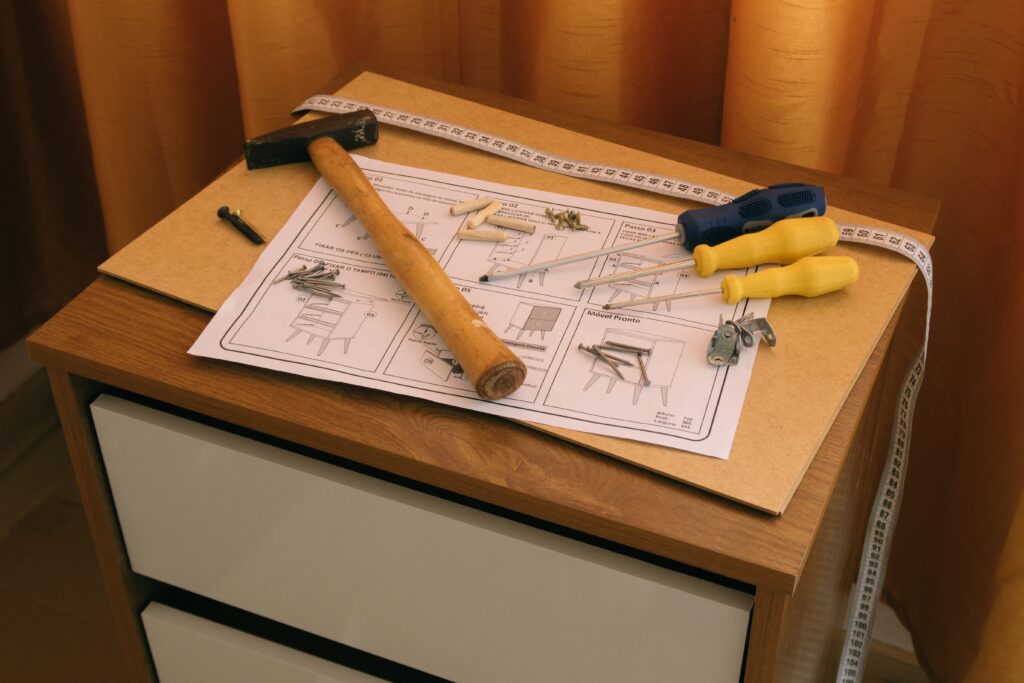Lease-Purchase Made Easy: A Comprehensive Guide to Finding, Financing, and Owning Your Dream Home
Introduction
Definition of lease-purchase agreements
A lease-purchase agreement is a hybrid of a traditional rental agreement and a mortgage contract. It allows the tenant to rent a property for a specified period of time, with the option to purchase the property at a later date. This type of agreement can be a flexible and affordable option for those who are not yet ready or able to qualify for a traditional mortgage, but are eager to become homeowners.
Lease-purchase agreements typically involve a down payment, which goes towards the eventual purchase of the property. The tenant also pays monthly rent, which is often higher than the market rate for a traditional rental. The extra rent payments go towards the purchase price of the property and are typically credited towards the down payment when the tenant decides to exercise their option to purchase.
Lease-purchase agreements can be a great option for those who are working to improve their credit or save up for a down payment, as they allow the tenant to build equity in the property while they work towards securing a traditional mortgage. They can also be a good option for those who are unsure if they want to commit to a specific property or location, as they allow the tenant to try out the property before committing to a purchase.
Benefits of using a lease-purchase to buy a home
Using a lease-purchase agreement to buy a home can offer a number of benefits to the tenant. One of the main benefits is the ability to secure a home and start building equity in it, even if you are not yet ready or able to qualify for a traditional mortgage. This can be especially beneficial for those who are working to improve their credit or save up for a down payment.
Another benefit of using a lease-purchase to buy a home is the flexibility it offers. Lease-purchase agreements typically involve a set period of time during which the tenant has the option to purchase the property. This allows the tenant to try out the property and see if it is the right fit for them before committing to a purchase. This can be especially useful for those who are unsure if they want to commit to a specific property or location.
In addition to the flexibility and the opportunity to build equity, using a lease-purchase to buy a home can also be a financially savvy decision. Because the tenant is paying both rent and a down payment towards the eventual purchase of the property, they are able to negotiate a lower
purchase price than they might be able to secure through a traditional mortgage. This can result in significant savings over the long term.
Finding the right property
Tips for finding properties available for lease-purchase
Finding properties available for lease-purchase can be a bit more challenging than finding traditional rentals or properties for sale. However, there are a few steps you can take to increase your chances of finding the perfect property for your needs.
One of the first things you should do is talk to a real estate agent who is familiar with lease-purchase agreements. They will have access to a wider range of properties and will be able to help you navigate the process of finding and securing a lease-purchase agreement.
Another option is to search online for properties that are available for lease-purchase. There are a number of websites and online classifieds that specialize in this type of real estate, and they can be a great resource for finding properties in your area. It’s also worth reaching out to individual landlords or property owners to see if they are open to negotiating a lease-purchase agreement.
Finally, don’t be afraid to get creative. If you have a specific property in mind that you would like to lease-purchase, consider reaching out to the owner directly to see if they are open to negotiating an agreement. You may be surprised by how open some people are to the idea of a lease-purchase.
Factors to consider when choosing a lease-purchase property
When choosing a lease-purchase property, there are a number of factors you should consider to ensure that you are making a smart financial decision.
One of the most important factors to consider is the condition of the property. A property that requires significant repairs or renovations may not be the best choice for a lease-purchase agreement, as the costs of these repairs will ultimately be your responsibility. Instead, look for a property that is in good condition and does not require any immediate repairs or renovations.
Another factor to consider is the location of the property. Choose a location that is convenient for you and your family, with access to amenities and transportation. A property in a desirable location will likely appreciate in value over time, which can be a significant benefit when you eventually exercise your option to purchase.
Finally, be sure to consider your budget when choosing a lease-purchase property. While lease-purchase agreements can be a flexible and affordable way to buy a home, it’s important to make
sure that you can comfortably afford the monthly rent and down payment. Carefully review the terms of the agreement and be sure to factor in any additional costs, such as property taxes and insurance, to ensure that you are making a financially sound decision.
How to negotiate the best terms for your lease-purchase agreement
Negotiating the best terms for your lease-purchase agreement is key to ensuring that you are getting the most out of your investment. Here are a few tips for negotiating a successful lease-purchase agreement:
- Do your research. Before you start negotiating, be sure to research the local real estate market and get a sense of what similar properties are selling for. This will help you determine a fair price for the property you are interested in and give you a starting point for negotiations.
- Be prepared to negotiate. Don’t be afraid to negotiate the terms of your lease-purchase agreement. This includes the purchase price, the length of the lease, and the terms of the option to purchase. Remember, the goal is to find an agreement that is mutually beneficial to both you and the seller.
- Consider working with a real estate agent. A real estate agent can be a valuable resource when it comes to negotiating the terms of a lease-purchase agreement. They have experience in these types of negotiations and can help you get the best deal possible.
- Get everything in writing. Once you have agreed on the terms of your lease-purchase agreement, be sure to get everything in writing. This includes the purchase price, the length of the lease, and the terms of the option to purchase. Having everything in writing will protect your interests and ensure that there is no misunderstanding about the terms of the agreement.
Financing a Lease-Purchase
Different financing options available for lease-purchase agreements
There are a few different financing options available for those who are interested in using a lease-purchase agreement to buy a home. Here are a few options to consider:
- Traditional mortgage: If you are able to qualify for a traditional mortgage, this may be the best financing option for your lease-purchase agreement. You will need to meet the lender’s credit and income requirements and may be required to make a down payment.
- Seller financing: In some cases, the seller of the property may be willing to finance the purchase themselves. This can be a good option for those who are unable to secure traditional financing, but it is important to carefully review the terms of the agreement to ensure that you are getting a fair deal.
- Lease-purchase financing: Some lenders offer to finance specifically for lease-purchase agreements. These financing options may have more flexible credit and income requirements than traditional mortgages, but they may also have higher interest rates
- Private financing: In some cases, you may be able to secure financing from a private lender, such as a family member or friend. This can be a good option if you are unable to secure traditional or lease-purchase financing, but it is important to carefully consider the terms of the agreement and the potential risks involved.
How to secure financing for a lease-purchase
Securing financing for a lease-purchase agreement can be a bit more complex than securing financing for a traditional mortgage. Here are a few steps you can take to increase your chances of securing financing for your lease-purchase:
- Improve your credit score: The better your credit score, the more likely you are to be approved for a loan. If your credit score is low, take steps to improve it before you start looking for financing. This may involve paying down outstanding debts, correcting errors on your credit report, and establishing a solid payment history.
- Gather your documentation: Lenders will need to see proof of your income, assets, and employment status. Be sure to gather all of the necessary documentation before you start applying for loans. This may include pay stubs, tax returns, bank statements, and proof of employment.
- Shop around: Don’t be afraid to shop around and compare loan offers from multiple lenders. Different lenders will have different credit and income requirements, as well as different interest rates and fees. By shopping around, you can find the loan that best meets your needs.
- Consider working with a real estate agent or mortgage broker: A real estate agent or mortgage broker can be a valuable resource when it comes to securing financing
Tips for negotiating the best financing terms for your lease-purchase
Negotiating the best financing terms for your lease-purchase agreement can help you get the most out of your investment. Here are a few tips for negotiating the best financing terms:
- Shop around: As with any loan, it’s important to shop around and compare offers from multiple lenders. This will help you find the lender with the best interest rates, fees, and credit requirements for your needs.
- Negotiate the down payment: The down payment for a lease-purchase agreement is typically a key part of the financing terms. Be sure to negotiate a down payment that is manageable for you, while still being fair to the seller.
- Consider the length of the lease: The length of the lease can have a big impact on the overall cost of your lease-purchase agreement. Be sure to negotiate a lease length that is appropriate for your needs and budget.
- Pay attention to the fine print: Be sure to carefully review the terms of your loan agreement, including the interest rate, fees, and any prepayment penalties. By paying attention to the fine print, you can avoid costly mistakes and ensure that you are getting the best deal possible.
Owning your Dream home

The process of transitioning from a lease-purchase to a traditional mortgage
If you are using a lease-purchase agreement to buy a home, you will eventually need to transition from the lease-purchase agreement to a traditional mortgage. Here is a general overview of the process:
- Meet the terms of your lease-purchase agreement: To be eligible to transition to a traditional mortgage, you will need to meet the terms of your lease-purchase agreement. This may include paying the required down payment and making timely rent payments.
- Improve your credit: If your credit score is not high enough to qualify for a traditional mortgage, you may need to work on improving your credit before you can transition. This may involve paying down outstanding debts, correcting errors on your credit report, and establishing a solid payment history.
- Shop for a mortgage: Once you are ready to transition to a traditional mortgage, you will need to shop around and compare offers from multiple lenders. Be sure to consider the interest rate, fees, and credit requirements of each lender to find the mortgage that best meets your needs.
- Complete the mortgage process: Once you have found a lender and a mortgage that meets your needs, you will need to complete the mortgage process. This may involve completing a mortgage application, providing documentation, and undergoing a credit check. Once the lender has approved your mortgage, you will be able to close on the property and become a homeowner.
Tips for maintaining and improving your lease-purchase property

Maintaining and improving your lease-purchase property is key to ensuring that it remains a valuable investment. Here are a few tips for maintaining and improving your lease-purchase property:
- Keep up with regular maintenance: Regular maintenance is essential to keep your property in good condition. This may include tasks such as mowing the lawn, cleaning gutters, and changing air filters. By keeping up with regular maintenance, you can prevent small problems from turning into larger, more expensive issues.
- Make minor repairs as needed: If you notice any minor issues with your property, be sure to take care of them as soon as possible. This may involve making small repairs yourself or hiring a contractor to fix the problem. By addressing small issues early on, you can prevent them from turning into bigger problems down the road.
- Consider making improvements: Making improvements to your property can increase its value and make it a more desirable place to live. Consider adding new features or making renovations to increase the value of your property.
- Keep your property clean and tidy: A clean and well-maintained property is more attractive to potential buyers or renters. Be sure to keep your property clean and tidy, both inside and out, to increase its value and appeal.
How to make the most of your lease-purchase agreement
There are a few steps you can take to make the most of your lease-purchase agreement and ensure that it is a successful and financially sound investment. Here are a few tips for making the most of your lease-purchase agreement:
- Choose the right property: Be sure to choose a property that meets your needs and is in good condition. A property that requires significant repairs or renovations may not be the best choice for a lease-purchase agreement.
- Negotiate the best terms: Be sure to negotiate the best terms for your lease-purchase agreement, including the purchase price, the length of the lease, and the terms of the option to purchase.
- Follow the terms of the agreement: To be eligible to transition to a traditional mortgage, you will need to follow the terms of your lease-purchase agreement. This includes making timely rent payments and any required down payment.
- Make improvements: Consider making improvements to your property, such as renovations or updates, to increase its value. This can be a great way to build equity in your property and make it a more desirable place to live.
Recap of the benefits of using a lease-purchase to buy a home
Using a lease-purchase agreement to buy a home can offer a number of benefits to the tenant. Here is a brief recap of some of the key benefits:
- The ability to secure a home and start building equity, even if you are not yet ready or able to qualify for a traditional mortgage.
- Flexibility, as lease-purchase agreements typically involve a set period of time during which the tenant has the option to purchase the property. This allows the tenant to try out the property and see if it is the right fit before committing to a purchase.
- The opportunity to negotiate a lower purchase price, as the tenant is paying both rent and a down payment towards the eventual purchase of the property.
- The ability to improve your credit or save up for a down payment while building equity in the property.
- A potentially financially savvy decision, as using a lease-purchase to buy a home can result in significant savings over the long term.
Next steps for those interested in pursuing a lease-purchase agreement
If you are interested in pursuing a lease-purchase agreement to buy a home, there are a few steps you can take to get started:
- Research the local real estate market and determine a fair price for the property you are interested in.
- Talk to a real estate agent who is familiar with lease-purchase agreements and ask for their advice on finding and securing an agreement.
- Consider working with a lender that specializes in lease-purchase financing.
- Research different properties available for lease-purchase and consider reaching out to individual landlords or property owners to see if they are open to negotiating an agreement.
- Once you have found a property and a lender that meets your needs, be sure to carefully review the terms of the lease-purchase agreement before signing. This will help ensure that you are making a financially sound decision.
- Consider working with a real estate lawyer to help you navigate the process and protect your interests.
Resources for further information on lease-purchase agreements
If you are interested in learning more about lease-purchase agreements and how they can be used to buy a home, there are a number of resources available. Here are a few places to start:
- Your local real estate agent: A real estate agent who is familiar with lease-purchase agreements can be a valuable resource for information and advice. They can help you find properties available for lease-purchase and answer any questions you may have about the process.
- Online real estate forums and communities: There are many online communities and forums dedicated to real estate, including those focused specifically on lease-purchase agreements. These can be a great place to ask questions, get advice, and connect with others who are interested in using lease-purchase agreements to buy a home.
- Legal resources: If you have specific legal questions about lease-purchase agreements, consider consulting with a real estate lawyer. They can help you understand your rights and obligations under the agreement and ensure that you are protected throughout the process.
- Financial resources: If you have questions about financing a lease-purchase agreement, consider consulting with a financial advisor or mortgage broker. They can help you understand your options and find the best financing solution for your needs.

